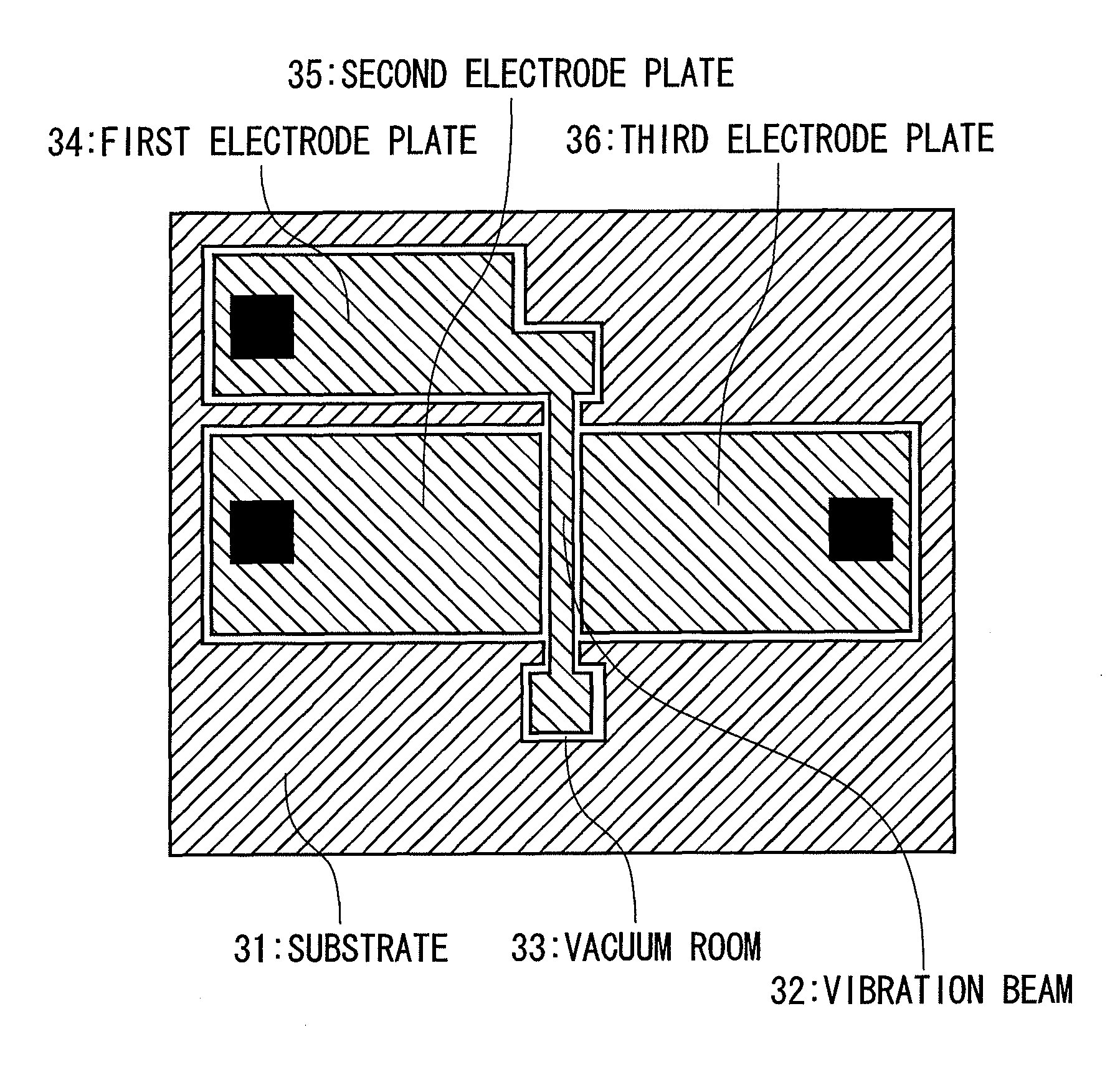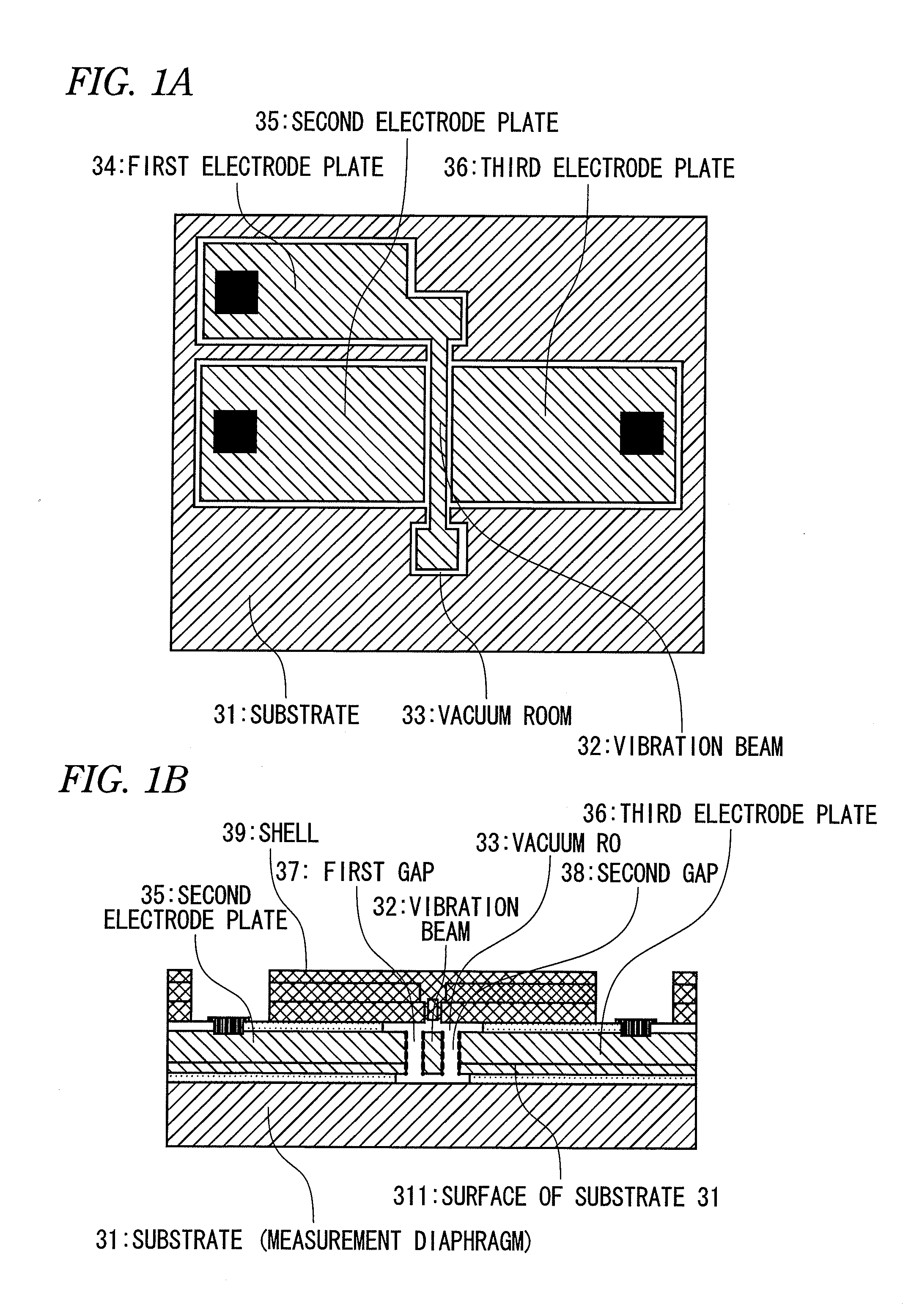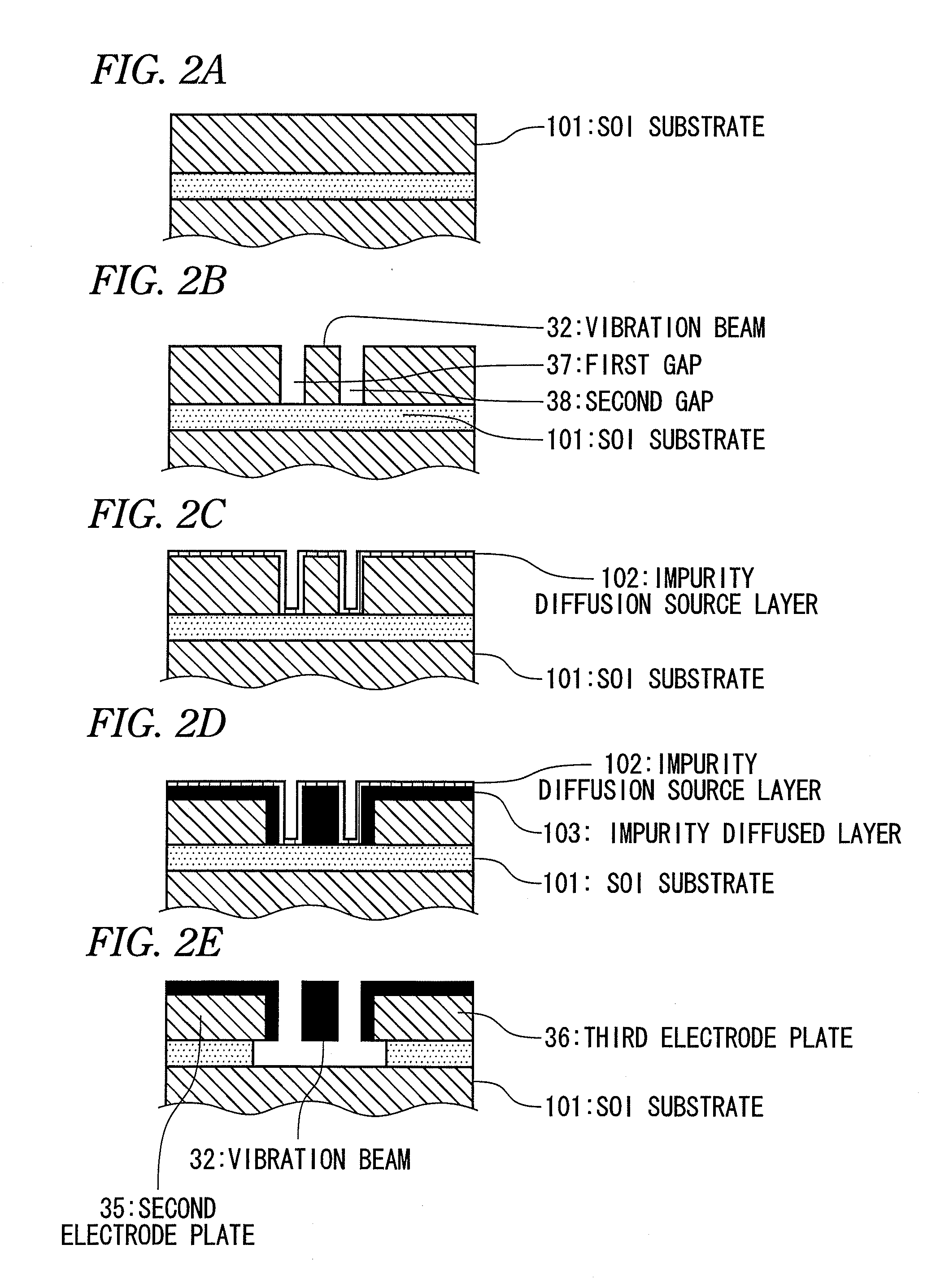Method of manufacturing resonant transducer
a resonant transducer and manufacturing method technology, applied in the manufacture of electrical transducers, microelectromechanical systems, microstructural devices, etc., can solve the problems of difficult to accurately control the tensile strain of vibration beams, unduly varying sensitivity, and the inability to give high tensile strain vibration beams when thick, etc., to achieve high tensile strain and high accuracy
- Summary
- Abstract
- Description
- Claims
- Application Information
AI Technical Summary
Benefits of technology
Problems solved by technology
Method used
Image
Examples
Embodiment Construction
[0060]Hereinafter, exemplary embodiments of the present invention will be described with reference to the accompanying drawings. In all the drawings for the explanation of the embodiments, the members having the same functions are represented by the same reference numerals, and repeated description thereof will be omitted.
[0061]FIGS. 1A and 1B are a plan view and a sectional view, respectively, illustrating the structure of an essential part of an example resonant transducer manufactured by a manufacturing method according to the invention. The same views as FIGS. 1A and 1B are disclosed in US2012 / 0060607 A1, published on Mar. 15, 2012 and filed on Sep. 9, 2011 by the present Applicant Yokogawa Electric Corporation.
[0062]Referring to FIGS. 1A and 1B, a vibration beam 32 is a silicon single crystal disposed in a vacuum room 33 and is longer in the direction perpendicular to a surface 311 of a substrate 31 (measurement diaphragm) than in the direction parallel with the surface 311 in ...
PUM
| Property | Measurement | Unit |
|---|---|---|
| voltage | aaaaa | aaaaa |
| covalent bond radii Ri | aaaaa | aaaaa |
| covalent bond radii Ri | aaaaa | aaaaa |
Abstract
Description
Claims
Application Information
 Login to View More
Login to View More - R&D
- Intellectual Property
- Life Sciences
- Materials
- Tech Scout
- Unparalleled Data Quality
- Higher Quality Content
- 60% Fewer Hallucinations
Browse by: Latest US Patents, China's latest patents, Technical Efficacy Thesaurus, Application Domain, Technology Topic, Popular Technical Reports.
© 2025 PatSnap. All rights reserved.Legal|Privacy policy|Modern Slavery Act Transparency Statement|Sitemap|About US| Contact US: help@patsnap.com



